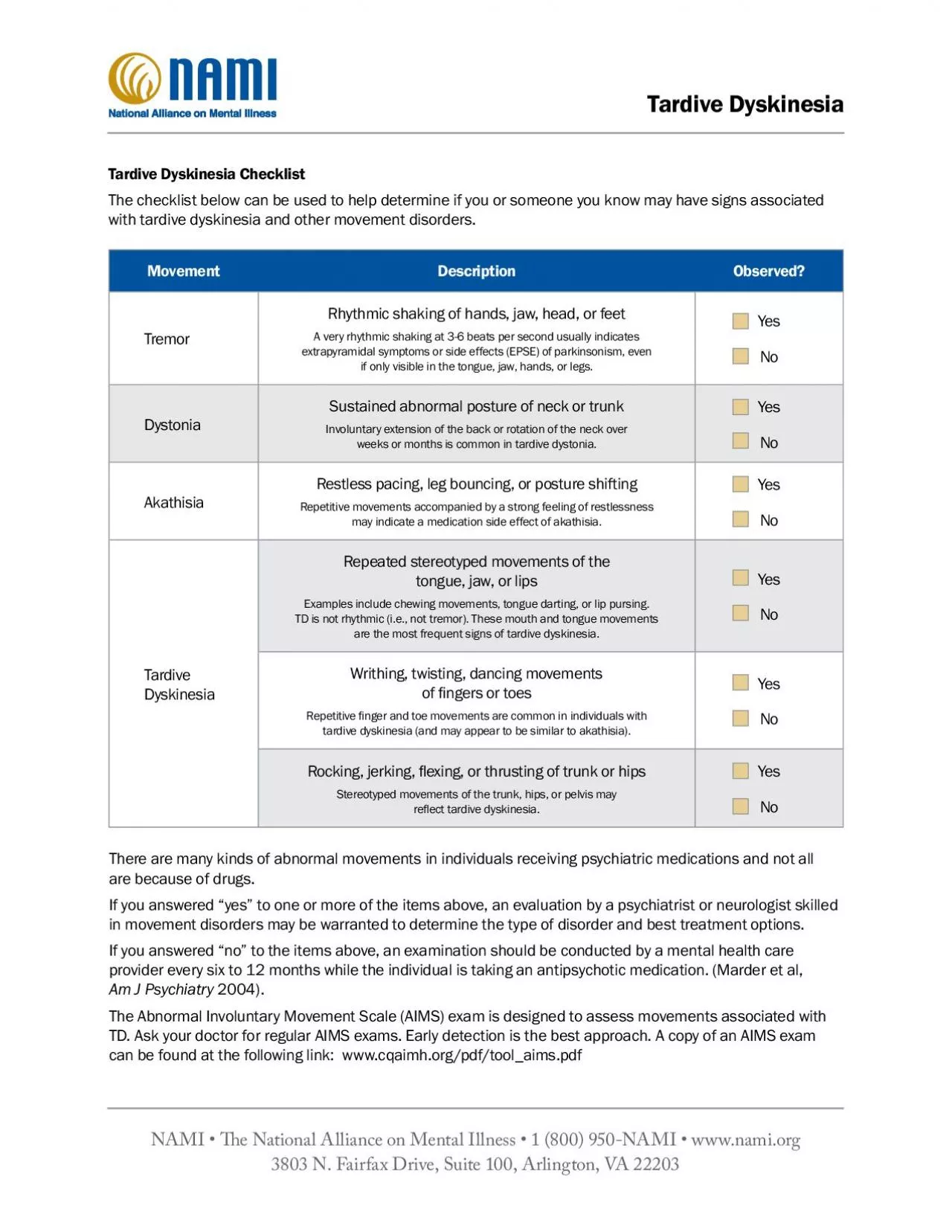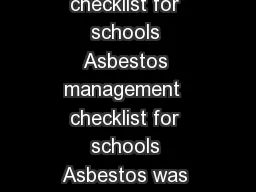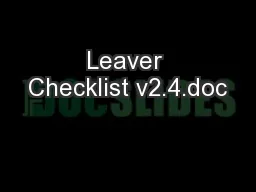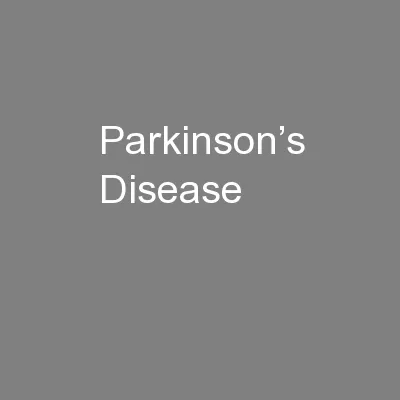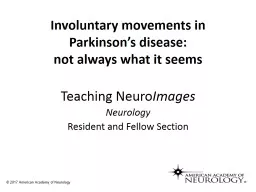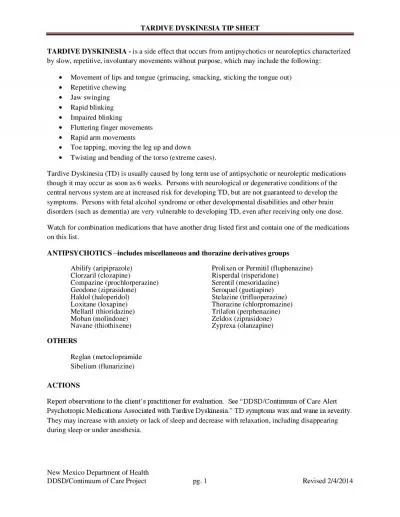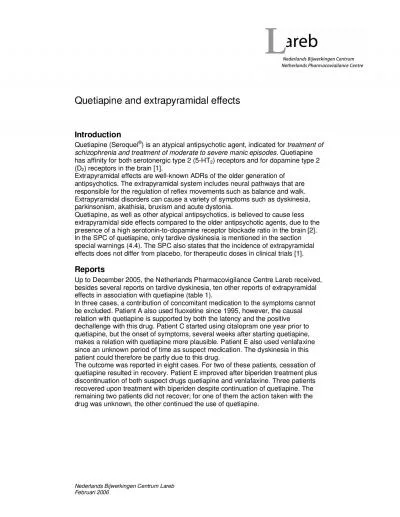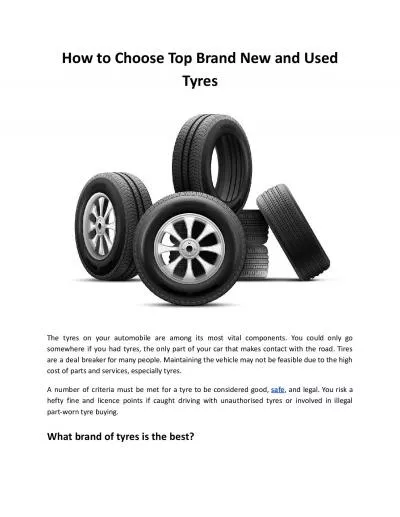PDF-Tardive Dyskinesia ChecklistThe checklist below can be used to help de
Author : ceila | Published Date : 2022-09-06
MovementDescriptionObservedTremorRhythmic shaking of hands jaw head or feetA very rhythmic shaking at 36 beats per second usually indicates extrapyramidal symptoms
Presentation Embed Code
Download Presentation
Download Presentation The PPT/PDF document "Tardive Dyskinesia ChecklistThe checklis..." is the property of its rightful owner. Permission is granted to download and print the materials on this website for personal, non-commercial use only, and to display it on your personal computer provided you do not modify the materials and that you retain all copyright notices contained in the materials. By downloading content from our website, you accept the terms of this agreement.
Tardive Dyskinesia ChecklistThe checklist below can be used to help de: Transcript
Download Rules Of Document
"Tardive Dyskinesia ChecklistThe checklist below can be used to help de"The content belongs to its owner. You may download and print it for personal use, without modification, and keep all copyright notices. By downloading, you agree to these terms.
Related Documents

